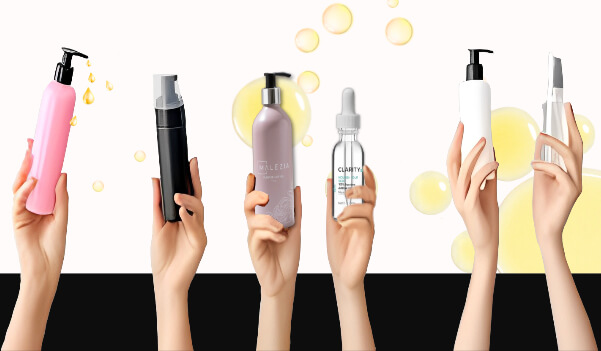
Table Of Contents
- First of all, what is Fungal Acne?
- What Makes an Oil Fungal Acne Safe?
- Fatty Acid Composition
- Non-Comedogenic & Lightweight Properties
- Tackles Fungal Acne Symptoms: Inflammation, Itching, and Redness
- Antifungal Properties
- The Best Fungal Acne Safe Oils
- 1. Malezia MCT Oil
- 2. ClarityRx Squalane Oil (Sugar Cane)
- 3. Tea Tree Oil
- 4. Manuka Oil
- *Fungal Acne Safe Oil Cleansers
- Malezia MCT Oil
- *The Worst Oil Cleanser for Fungal Acne
- *Fungal Acne Safe Hair Oils
- *The Best Fungal Acne Safe Treatment Oils
- *The Best Antifungal Essential Oils for Treating Fungal Acne
- *The Worst Oils for Fungal Acne
- *Is Mineral Oil Fungal Acne Safe?
- *How to Incorporate Fungal Acne Safe Oils into Your Skincare Routine
- Patch testing and sensitivity check
- Frequency and proper application techniques
- *Usage tips for fungal acne safe hair oils
- *Common mistakes to Avoid
- Not using only fungal acne safe products
- Not cleansing the skin first
- Not doing a patch test before use
- Applying too much product
- *Other Considerations for Fungal Acne
- Importance of a consistent skincare routine
- Avoiding potential irritants in skincare products
- Proper hygiene practices to prevent fungal overgrowth
- Seeking professional advice if symptoms persist or worsen.
- Summary
Well, well, well, if it isn’t fungal acne rearing its ugly head again.
If you’re someone who’s been battling fungal acne for a while, you know how frustrating it can be to find the right skincare products that won’t aggravate your condition.
But fear not, we’re here to help you navigate through the endless sea of skincare options and find the perfect oils to add to your routine.
Whether you’re a skincare enthusiast or a beginner, this guide will provide you with all the information you need to know about fungal acne safe oils.
So, grab a cup of tea, sit back, relax, and get ready to learn about the best oils to add to your skincare arsenal.
First of all, what is Fungal Acne?
Fungal acne, scientifically known as Malassezia folliculitis, is a common skin condition caused by an overgrowth of yeast on the skin.
As a result of this overgrowth, small, itchy bumps that can easily be mistaken for traditional acne can develop on the skin.
It is essential to understand the difference between fungal acne and other types of acne in order to treat and manage the condition effectively.
Lucky for you, we’ve previously gone over the specifics of this bothersome condition and have shared some safe and effective ways to treat it from the comfort of your own home.
Hence, we will not spend much time discussing the ins and outs of this pesky condition in this post.
If you’re interested in learning more about fungal acne, its causes, and how to treat it, we recommend checking out our previous articles on the topic:
“Understanding Fungal Acne: Causes, Symptoms, and Treatment”
“Effective Ways to Treat Fungal Acne at Home”
These articles provide in-depth information on fungal acne and offer practical tips and advice on how to treat it safely and effectively. We hope you find them helpful!
What Makes an Oil Fungal Acne Safe?
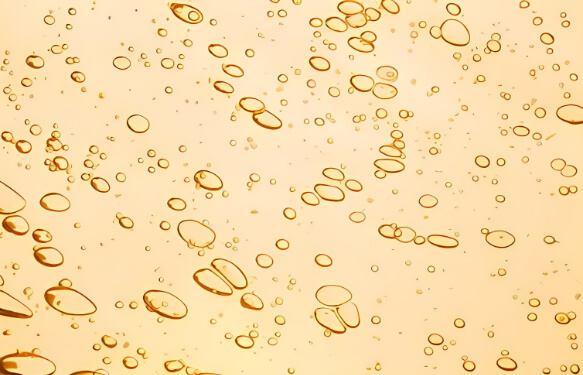
When it comes to treating fungal acne, one of the key factors to consider is the type of oil you are using. Not all oils are created equal, and some can actually exacerbate the condition rather than alleviate it.
So, what makes an oil fungal acne safe? The answer lies in its composition and properties.
Fatty Acid Composition
While many articles focus on the role of oleic and linoleic acids, research suggests that oils like these, with carbon chain lengths ranging from C12 to C24, may be unsafe for fungal acne-prone skin.
When applied to the skin, these longer-chain fatty acids can worsen fungal acne by creating a lipid-rich environment that is favorable for fungal growth. [1 , 2]
Therefore, it is advisable to avoid oils that contain these longer-chain fatty acids if you have fungal acne-prone skin. Instead, opt for oils that have shorter carbon chain lengths, such as caprylic acid (C8) and capric acid (C10), as they have been shown to have antifungal properties and can help maintain a healthy balance on the skin.
Non-Comedogenic & Lightweight Properties
When it comes to skincare, non-comedogenic properties are the holy grail for individuals with fungal acne-prone skin.
These properties ensure that the substance in question won’t clog the pores, which is crucial for allowing the skin to breathe and reducing the likelihood of occlusion and fungal growth.
Non-comedogenic oils, in particular, are an excellent addition to any skincare routine aimed at promoting healthy, clear, and radiant skin.
Their lightweight and fast-absorbing nature means they won’t block your pores like thicker oils, which can create an occlusive barrier that enhances the risk of fungal growth and acne flare-ups. [3 , 4, 5]
In addition to their non-comedogenic properties, these oils can also help balance the skin’s natural oil production and provide hydration without leaving any greasy residue. [6]
This makes them perfect for all skin types, including dry, oily, and acne-prone skin.
But that’s not all—non-comedogenic oils are often rich in antioxidants and vitamins that help repair and protect the skin from environmental damage, making them an excellent choice for anyone looking to enhance their skincare routine. [7, 8]
So, if you’re struggling with fungal acne and looking to improve your skin’s health and appearance, consider adding non-comedogenic oils to your skincare arsenal.
Important!
It is important to note that while using non-comedogenic and lightweight oils can be beneficial for fungal acne-prone skin, it is also crucial to maintain a consistent skincare routine and consult with a dermatologist for personalized advice and treatment options.
Tackles Fungal Acne Symptoms: Inflammation, Itching, and Redness
Fungal acne is a challenging and often unpleasant condition that can cause a range of discomforts, such as burning, redness, inflammation, and itchiness.
These symptoms can make you feel self-conscious and anxious about your appearance, which can ultimately affect your self-confidence and make you feel less comfortable in your own skin.
Thankfully, there are several pure and fungal acne-safe oils that you can use to alleviate these uncomfortable symptoms and promote the repair of your skin back to its optimal, healthy state.
Unlike harsh treatments that can strip your skin of its natural oils, fungal acne-safe oils work with your skin to soothe and calm irritation while also providing anti-inflammatory, anti-redness, and anti-itching benefits that can help promote the healing process.
But the benefits of fungal acne-safe oils don’t stop there.
They can also be helpful in dealing with other common skin concerns, such as regular acne, bacterial folliculitis, hyperpigmentation, and environmental or chemical irritations caused by personal or beauty cosmetics that are not suitable for your skin type or the climate of your location.
By incorporating fungal acne-safe oils into your daily skincare routine, you can give your skin the much-needed support it requires to thrive and look its best, leaving you with clear and beautiful skin that you’ll love to show off.
Antifungal Properties
Antifungal properties refer to the ability of certain substances or compounds to inhibit the growth or spread of fungi. These properties can be beneficial in preventing or treating fungal infections, including fungal acne.
These oils can help maintain a healthy balance on the skin and minimize the risk of fungal growth, ultimately supporting the healing process. [7, 8]
The Best Fungal Acne Safe Oils
When it comes to dealing with fungal acne, oil cleansers can be a tricky business.
However, there are certain oils that have been consistently voted as high-quality, reliable, and efficient oils that won’t aggravate the situation.
These top fungal acne-safe oils have been proven effective in managing the condition and are well-regarded by the skincare community for their safety, purity, and potency.
So, if you’re struggling with fungal acne, these oils are definitely worth considering.
Affiliate Disclosure: We’ve taken the time to pick products you may find useful. If you buy through our links, we may earn a small commission. To learn more, read our affiliate disclosure. Thank you for considering our recommendations.
Malezia MCT oil is a fungal acne-safe oil that contains medium-chain triglycerides, which have been shown to possess antifungal properties and can help control the growth of fungi on the skin.
This particular MCT oil is considered to be one of the best oils for fungal acne worldwide.
The brand is highly particular when it comes to sourcing its ingredients, which is quite admirable.
It is quite impressive that Malezia takes such measures to ensure the safety of its products by verifying that each ingredient used is truly safe for fungal acne-prone skin. This is a significant advantage that we appreciate and a huge plus in our books.
ClarityRx Squalane Oil is another excellent option for fungal acne, as it is lightweight, non-comedogenic, and helps to balance the skin’s moisture levels, promoting a healthy and clear complexion.
Furthermore, squalane is a substance that our bodies naturally produce, making this multipurpose oil a skin-identical substance with characteristics similar to sebum and highly hydrating.
Regular use of this luxurious emollient can help repair the skin barrier and provide antioxidant protection that neutralizes the effects of UV radiation. This results in firmer and healthier-looking skin.
This premium oil is a must-have for every skincare routine.
Its effectiveness is unparalleled, and it will leave your skin looking and feeling amazing. Don’t miss the opportunity to add this product to your skincare regimen.
Tea tree oil is a popular choice for fungal acne due to its natural antifungal properties and ability to reduce inflammation on the skin.
Manuka oil is another powerful natural remedy for fungal acne, known for its strong antimicrobial properties and ability to soothe and heal the skin.
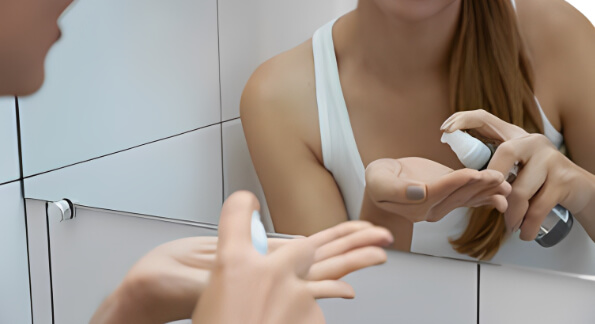
Malezia MCT Oil
We have discovered that Malezia’s purified MCT oil is highly effective as a cleansing oil for people with fungal acne-prone skin.
It has been specifically designed to cater to the unique needs of acne-prone skin and is gentle on the skin.
This purified cleansing oil has the capability to dissolve impurities and layered products, including thick cream-based sunscreens and long-wear waterproof makeup. It also helps to balance the skin’s natural oils.
The gentle formula of this cleansing oil ensures that it does not cause any irritation or clog pores, making it perfect for individuals who have very sensitive or acne-prone skin.
It is the perfect first-step cleansing oil for those who follow the double cleansing method, which involves using an oil cleanser followed by a water-based cleanser.
This method helps in achieving a deeper cleanse, leaving the skin feeling refreshed and revitalized.
Even if you are not a fan of double cleansing, this cleansing oil is definitely worth trying because of its amazing benefits.
Without a doubt, it is the best fungal acne safe oil cleanser to date for people with acne-prone skin.
*The Worst Oil Cleanser for Fungal Acne
According to skincare experts, the worst oil cleanser for fungal acne is the one that contains comedogenic ingredients, including fatty acid substances that can promote fungal growth and worsen your acne.
These ingredients, such as palm oil, coconut oil, jojoba oil, olive oil, or soybean oil, can exacerbate acne breakouts and clog pores. [9]
Some examples of such oil cleansers are:
Kose’s Softymo Cleansing Oil, which contains Safflower Oil and Jojoba Seed Oil, and Anua’s Heartleaf Pore Control Cleansing Oil, which contains Macadamia Oil and Olive Oil.
Therefore, it is crucial to check the ingredients before choosing an oil cleanser for fungal acne.
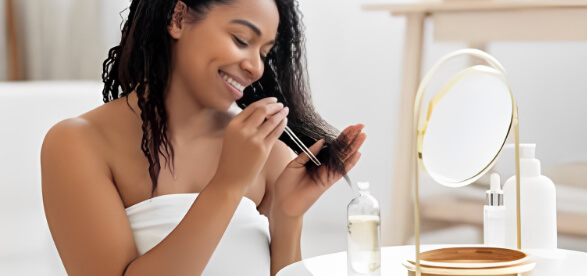
Choosing the right hair oils for fungal acne can be tricky, but you can save time by following the same rules as when selecting fungal acne-safe oils for your face or body.
The first thing to keep in mind is to look for non-comedogenic hair oils that are produced by fungal acne-aware brands.
These oils should also be free from any contaminants or other substances that can exacerbate breakouts.
Moreover, it’s recommended to opt for hair oils that contain anti-fungal properties, such as capric or caprylic acid oil, eucalyptus, tea tree, peppermint, or cinnamon bark oil, as they can help combat the fungal overgrowth on the scalp.
These oils can be particularly helpful for those who suffer from an itchy or flaky scalp due to fungal acne.
When it comes to premium and noteworthy examples of fungal acne-safe hair oils, two products stand out in the crowd.
The first one is the Premium MCT oil, which is considered the best option due to its high quality, purity, and effectiveness.
The second option is the Premium plant-based oil, which is also an excellent choice for those looking for a fungal acne-safe hair oil that is both effective and versatile.
Both of these products have been highly recommended by experts and have received positive reviews from users.
RELATED: As part of your regimen for healthy, shiny hair, be sure to read our post on shampoos that are safe for use with fungal acne.
When it comes to treating fungal acne safely and effectively, there are a few standout treatment oils that rise above the rest.
doTerra oils, particularly their tea tree oil or melaleuca oil, are known for their powerful antimicrobial and anti-inflammatory properties, making them highly effective in treating fungal acne and folliculitis.
Purely Northwest tea tree oil is another great option that is often overlooked.
However, a dual-purpose oil that is often underestimated in the world of fungal acne treatment is MCT oil.
Not only can it be used as a carrier oil to dilute other oils, but it also has strong antimicrobial effects on fungi, making it an effective standalone treatment.
Additionally, MCT oil can help soothe and remedy seborrheic dermatitis symptoms.
So, for those who are looking for a versatile and effective fungal acne safe treatment oil, MCT oil is definitely worth considering.
Fungal acne can be a frustrating and stubborn condition to treat, but essential oils have shown promising results in combating it.
Thyme oil, known for its antimicrobial properties, has been found to effectively inhibit the growth of the fungus that causes this type of acne.
Australian tea tree oil is another powerful antifungal agent that can help clear up fungal acne by reducing inflammation and killing off the fungus.
Eucalyptus oil, with its strong antiseptic qualities, can also be beneficial in treating fungal acne by cleansing the skin and preventing further infection.
Lemongrass oil, known for its astringent properties, helps to balance oil production and reduce pore clogging, making it a useful addition to a skincare routine for fungal acne.
Peppermint oil, with its cooling and soothing effects, can provide relief from the inflammation and itching associated with fungal acne.
Lastly, cinnamon oil, with its powerful antifungal and antibacterial properties, can help to eliminate the fungus and reduce acne-causing bacteria on the skin.
Every one of these essential oils has powerful antifungal properties that can get to the root of fungal acne and knock it out.
Overall, the combination of these essential oils can offer a natural and effective solution for treating fungal acne.
*The Worst Oils for Fungal Acne
If you suffer from fungal acne, it’s important to have accurate information about the condition.
Using the wrong skin oils can actually make things much worse by unknowingly feeding the fungus, resulting in persistent symptoms despite your best treatment efforts.
In fact, of all the available cosmetic and beauty products, oils are at the top of the list of things you need to be careful about when trying to eradicate fungal acne from your skin or scalp.
Don’t fall prey to misinformation or hype when selecting your skincare products. Malassezia yeasts are attracted to lipids or oils, and most oils can be like an all-you-can-eat buffet for this acne-causing microorganism.
Therefore, it’s essential to steer clear of oils that can worsen the condition.
Oils high in oleic or palmitic fatty acids, such as olive, palm, and soybean oil, are the worst to use if you have fungal acne because they can act as major food sources for the yeast on your skin, feeding it and causing it to grow much faster compared to similar oils.
Other oils to steer clear of include rosehip oil, castor oil, grape seed oil, marula oil, sweet almond oil, safflower oil, sunflower oil, hemp seed oil, evening primrose oil, squalene oil, neem oil, macadamia ternifolia seed oil, moringa oleifera seed oil, and many others.
Fortunately, we’ve put together helpful guides like this one to help you save time and money when looking for the best fungal acne products for your skin.
It’s also important to note that everyone’s skin is different, so what may work for one person may not work for another. It’s always best to consult with a dermatologist to determine the most suitable skincare routine for your specific needs.
To balance your skin’s natural oils and reduce inflammation, look for oils that are high in caprylic acid, such as a Premium Purified MCT oil, or an antifungal oil, such as manuka oil, to help eradicate existing acne.
Some popular products containing these “bad” oils are
Bio-Oil
Trilogy Rosehip Oil
Kate Blanc Rosehip Oil
Palmer’s Cocoa Butter Formula Moisturizing Skin Therapy Oil
Dr. Barbara Sturm Face Cream for Men
Anua – Heartleaf Pore Control Cleansing Oil
Sunday Riley C.E.O. Glow Vitamin C & Turmeric Face Oil
Cliganic Organic Jojoba Oil
Important!
It’s important to remember that everyone’s skin is different, and what works for one person may not work for another. So keep an open mind and be willing to try different products and techniques until you find what works best for your skin type. Additionally, it’s always a good idea to consult with a dermatologist for more personalized advice and recommendations.
*Is Mineral Oil Fungal Acne Safe?
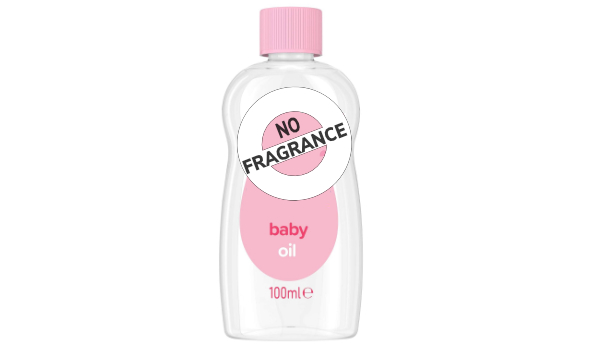
While mineral oil doesn’t contain any fatty acids that can feed the fungus, it still may not be the best option for those battling this pesky skin condition. [10, 11]
Despite being essentially unscented baby oil, mineral oil’s occlusive nature and the possibility of impurities can cause problems for those with Malassezia-related skin disorders. [12, 13]
So, if you’re struggling with fungal acne, it’s best to avoid excessive occlusion and opt for trusted alternatives like MCT oil, squalane oil, or even the holy grail of cleansing balms—Malezia’s meticulously crafted cleansing balm.
This way, you can make informed decisions and avoid taking chances with your skin by choosing the best available options.
*How to Incorporate Fungal Acne Safe Oils into Your Skincare Routine
Patch testing and sensitivity check
When incorporating fungal acne safe oils into your skincare routine, it is crucial to patch test and perform a sensitivity check.
This step is essential to ensure that the oil you are using does not trigger any adverse reactions or worsen your fungal acne.
To properly conduct a patch test, read our article on patch testing. It will guide you through the process and help you determine if the oil is suitable for your skin.
Frequency and proper application techniques
When incorporating fungal acne safe oils into your skincare routine, it’s essential to consider the frequency and proper application techniques.
For most oils, it’s recommended to use them once or twice a day, depending on your skin’s needs and tolerance. It’s crucial to start with a small amount and gradually increase the frequency if your skin responds well.
Additionally, when applying the oil, make sure to cleanse your face, hair, or scalp thoroughly beforehand and apply it to clean and dry skin.
Afterward, apply a soothing toner and follow up with your favorite fungal acne safe moisturizer to keep your skin hydrated and nourished. It’s important to ensure that your skin is completely dry before applying any oil-based products.
To complete your skincare routine, apply the oil after the toner and moisturizer to lock in the hydration.
Gently massage the oil into your skin using circular motions, allowing it to fully absorb.
This will help to ensure that the oil penetrates deeply into the skin and provides maximum benefits. It’s also important to avoid applying too much pressure or rubbing too vigorously, as this can irritate the skin.
Important!
Be sure to properly dilute any antifungal essential oils before applying them to your skin. Undiluted essential oils can cause skin irritation or allergic reactions. Dilute them with a carrier oil, such as MCT or squalane oil, before applying to ensure safe and effective use.
*Usage tips for fungal acne safe hair oils
When using fungal acne safe hair oils, it’s important to focus on the scalp and roots of the hair.
Gently massage the oil into the scalp using your fingertips, ensuring even distribution.
Avoid applying the oil directly onto the lengths and ends of your hair, as this can weigh it down and make it appear greasy.
Additionally, it’s recommended to leave the oil on for at least 30 minutes before washing it out to allow for maximum absorption.
Remember to follow a consistent hair care routine and avoid using any products that may trigger fungal acne, such as those containing fungi-feeding oils or ingredients that can clog the pores.
It’s also important to keep your hair and scalp clean by washing regularly with a fungal acne safe shampoo.
Overall, with proper and careful use, fungal acne safe hair oils can be a beneficial addition to your hair care routine, promoting a healthy scalp and nourished hair.
*Common mistakes to Avoid
Not using only fungal acne safe products
Firstly, be cautious when using products that contain fungi-feeding oils or ingredients that can clog the pores; this cannot be stressed enough. These products can exacerbate fungal acne and directly hinder its healing process.
RELATED: Also, check out our piece on the importance of using only fungal acne safe products while we’re on the subject.
Not cleansing the skin first
Make sure to cleanse your face thoroughly before applying any oil-based products to ensure a clean and clear canvas for absorption.
Also keep in mind that oils have the ability to form a little barrier on the skin, which is excellent for retaining moisture but problematic if the skin beneath it is trapping impurities that could lead to flare-ups. Therefore, never, ever apply oils to unclean skin!
Not doing a patch test before use
Remember to patch-test new products before fully incorporating them into your routine to avoid any potential allergic reactions or skin sensitivities.
Applying too much product
When adding fungal acne safe oils to your skincare routine, it is essential to avoid making the mistake of using too much.
Using an excessive amount of oil can hamper the skin’s breathing process, resulting in clogged pores and breakouts.
Though oils can be advantageous for the skin, remember that less is best.
It is recommended to begin with a small amount and gradually increase it if required, ensuring that your skin can tolerate it without any adverse reactions.
By being mindful of these factors, you can effectively incorporate fungal acne safe oils into your skincare routine and promote healing.
It is also important to note that consistency is key in treating fungal acne, so make sure to stick to your skincare routine and give the products enough time to work their magic.
With proper care and attention, you can help manage and improve the condition of your fungal acne.
*Other Considerations for Fungal Acne
Importance of a consistent skincare routine
One important consideration when incorporating fungal acne oils into your skincare routine is the importance of maintaining a consistent routine.
Consistency is key in treating fungal acne and ensuring that the products have enough time to effectively work their magic. By sticking to a regular skincare routine, you can help manage and improve the condition of your fungal acne over time.
Avoiding potential irritants in skincare products
Another consideration for using oil-based skincare is to carefully read the ingredient list of these products to avoid potential irritants.
Some common irritants include fragrances, drying alcohols, petroleum-based dyes, specific fatty alcohols, and certain preservatives that can exacerbate fungal acne symptoms.
Proper hygiene practices to prevent fungal overgrowth
To prevent the spread of fungal acne, it’s important to practice good hygiene habits such as regularly washing and changing pillowcases, towels, hair accessories, and makeup brushes.
Also, be cautious when using heavy makeup or skincare products that can clog pores and worsen fungal acne.
Additionally, try to avoid excessive sweating and ensure proper ventilation in your clothing to prevent a humid environment that fungi thrive in.
By following these simple steps, you can incorporate fungal acne safe oils into your skincare routine and maintain healthy, clear skin.
Seeking professional advice if symptoms persist or worsen.
Be sure to consult a dermatologist or skincare professional for personalized recommendations and treatments if fungal acne symptoms persist or worsen despite self-care efforts.
Summary
Dealing with fungal acne can be a frustrating experience, but it is a manageable condition that can be treated with the right knowledge and an optimized skincare routine.
One effective way to keep your skin healthy and balanced is by incorporating fungal acne safe oils into your routine.
To choose the right products, it’s important to understand the composition and properties of oils. Long-chain fatty acids ranging from C12 to C24 can exacerbate fungal acne by providing a suitable environment for fungal growth. Therefore, it’s best to avoid oils that contain these fatty acids and opt for shorter-chain fatty acids like caprylic acid (C8) and capric acid (C10) instead.
In addition, non-comedogenic and lightweight oils are great for promoting healthy, clear, and radiant skin. Remember, less is best, and consult with a dermatologist if your symptoms persist or worsen.
If you’re struggling with fungal acne or just looking for a healthier skincare routine, try incorporating fungal acne safe oils into your routine.
Start by patch testing and incorporating one oil at a time to see how your skin reacts.
By prioritizing fungal acne safe products, you can take control of your skin health and achieve the clear, glowing complexion you deserve.
Read our previous article about expert tips for achieving clear, smooth, radiant skin with almond clear’s mandelic acid products (updated).
-
Wilde, P. F., & Stewart, P. S. (1968). A study of the fatty acid metabolism of the yeast Pityrosporum ovale. Biochemical Journal, 108(2), 225-231. https://doi.org/10.1042/bj1080225
-
Ashbee HR, Evans EG. Immunology of diseases associated with Malassezia species. Clin Microbiol Rev. 2002 Jan;15(1):21-57. doi: 10.1128/CMR.15.1.21-57.2002. PMID: 11781265; PMCID: PMC118058.
-
Purnamawati, S., Indrastuti, N., Danarti, R., & Saefudin, T. (2017). The Role of Moisturizers in Addressing Various Kinds of Dermatitis: A Review. Clinical Medicine & Research, 15(3-4), 75-87. https://doi.org/10.3121/cmr.2017.1363
-
Hamishehkar H, Same S, Adibkia K, Zarza K, Shokri J, Taghaee M, Kouhsoltani M. A comparative histological study on the skin occlusion performance of a cream made of solid lipid nanoparticles and Vaseline. Res Pharm Sci. 2015 Sep-Oct;10(5):378-87. PMID: 26752986; PMCID: PMC4691958.
-
Bäck O, Faergemann J, Hörnqvist R. Pityrosporum folliculitis: a common disease of the young and middle-aged. J Am Acad Dermatol. 1985 Jan;12(1 Pt 1):56-61. doi: 10.1016/s0190-9622(85)70009-6. PMID: 3980804.
-
Purnamawati, S., Indrastuti, N., Danarti, R., & Saefudin, T. (2017). The Role of Moisturizers in Addressing Various Kinds of Dermatitis: A Review. Clinical Medicine & Research, 15(3-4), 75-87. https://doi.org/10.3121/cmr.2017.1363
-
Sethi, A., Kaur, T., Malhotra, S., & Gambhir, M. (2016). Moisturizers: The Slippery Road. Indian Journal of Dermatology, 61(3), 279-287. https://doi.org/10.4103/0019-5154.182427
-
Kim SK, Karadeniz F. Biological importance and applications of squalene and squalane. Adv Food Nutr Res. 2012;65:223-33. doi: 10.1016/B978-0-12-416003-3.00014-7. PMID: 22361190.
- Other sources are linked within the article.
Related Content
- How to Cure Fungal Infection on Skin Naturally at Home
- Fungal vs Bacterial Acne: Spot the Difference and Treat It
- The Best Fungal Acne Safe Face Wash for Your Skin (New Recommendations)
- Top 7 Fungal Acne-Safe Moisturizers You Can Always Count On
- Malezia Skincare: A Game-changer for Fungal Acne
- Tea Tree Oil For Fungal Acne
- Skin Care Routine for Fungal Acne
- The Best Non-Anti fungal* Fungal Acne Safe Shampoos
- The Truth About Retinol and its Effectiveness in Treating Fungal Acne
- Unlocking the Power of Sulfur for Fungal Acne
- Does Niacinamide Help with Fungal Acne?
- Fungal Acne Safe Products You Can Add To Your Skin Routine
- 18 Sunscreens for Fungal Acne
- Fungal Acne-Safe Toners Your Skin Will Love
- The Best Products for Fungal Acne
- Fungal Acne Safe Foundation Makeup
- Best Antifungal Creams for Face
- Top-Rated Benzoyl Peroxide Face Wash for Acne
- DIY Fungal Acne Treatment at Home: Natural Solutions That Work
- What is Fungal Acne
